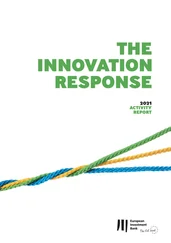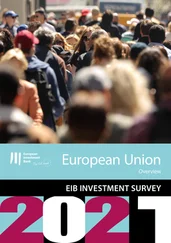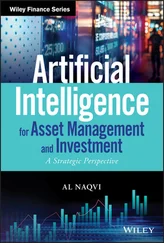1 ...6 7 8 10 11 12 ...28
Protecting the single market and reducing the spillover of negative effects
European economies are more open than other advanced economies.Export dependence, defined as the share of exports and imports to GDP, is above 66% in Germany and higher than 40% in France ( Figure 5). Overall, external trade in goods and services accounts for 27% of euro area GDP, a share that rises to 45% when including trade among EU members. The European economy is therefore highly integrated and maintaining cross-border movement is key to its functioning, more so than elsewhere in the world. Regions located close to borders also rely heavily on commuting foreign workers to function ( Figure 6). Taking into account the implications of cross-border mobility restrictions is therefore of paramount importance, and the corresponding policies must be developed at the European, and not just the local, level. A major risk is that uncoordinated lockdowns lead to repeated virus outbreaks and, in turn, further lockdowns across Europe, resulting in steeper declines in GDP (Kohlscheen et al., 2020).
Figure 5
External trade in goods in EU economies(% GDP, 2019)

Source: EIB Economics Department calculations based on Eurostat.
Note: Last record 2019.
Guaranteeing a level playing field and preventing increased divergence within Europe are essential.Given asymmetries in financial conditions, the European single market is at risk and widening disparities should be avoided. In Figure 7, we correlate the decline in GDP with GDP per capita for EU economies. While EU countries have been affected to different extents – the decline in GDP following the first wave ranged from zero to 14% – the impact is unrelated to countries’ relative wealth. It would have been reasonable to expect the capacity of hospitals and health services to be related to income per capita, with poorer countries less able to provide medical assistance and therefore implementing longer and more stringent lockdown policies to prevent the rapid saturation of the medical system. While this factor may have played a role, many others were also at issue. Ultimately, and fortunately, the magnitude of the shock was unrelated to the level of economic development. Preventing a widening of divergences in Europe after the pandemic will be critical.
Figure 6
Cross-border workers(country of work, thousands, 2018)

Source: European Commission, 2019 Report on intra-EU Labour Mobility.
Figure 7
EU economies: Income per capita and ouput decline during the first wave

Source: Eurostat and EIB calculations.
Note: Last record, October 2020.
A strong EU response is needed to avoid second-round effects and negative spillovers.Above and beyond the policy measures of individual Member States, a strong need exists for a common, mutually reinforcing EU response to the crisis. European economies are strongly interconnected and a shock experienced in any member spreads to the rest of the European Union through labour movements, value chains, terms of trade and external demand. These spillovers can be fairly significant. In addition to the direct impact of the crisis, a 1% change in the GDP of Germany, France, Italy and Spain results in a further indirect change in the euro area’s GDP of 0.25%, 0.2%, 0.1% and 0.1 % respectively, merely on account of trade spillovers in the euro area (ECB, 2013).
Similarly, a positive shock in any EU country triggers favourable effects throughout the European Union.The impact of EIB loans is a good illustration of how interdependent EU economies are. Macroeconomic modelling by the Economics Department of the EIB Group together with the Joint Research Centre of the European Commission shows that, in the long run, indirect effects can be substantial. Cross-country spillovers in the European Union explain, on average, 40% of the impact of EIB investment on jobs and GDP in EU members. While smaller and more integrated countries gain more in relative terms, large EU countries also benefit greatly from positive spillover effects. In Germany, for instance, spillover effects account for more than 30% of the total impact of EIB investment on jobs (EIB, 2018).
Latest developments in the real European economy
EU GDP shrank massively in the first half of 2020
Growth in most EU economies slowed in 2019, especially in the second half of the year (Figure 8a).Slowing exports and a drawing down of inventories dragged down growth in real GDP in a majority of EU Member States. Declining international trade throughout the year, the result of intensifying trade tensions between the United States and its key trading partners, was the most likely reason (UNCTAD, 2020a). The US economy was affected by these developments too, but growth there remained well above the European Union’s because of a strong increase in private consumption ( Figure 8b).
Figure 8
Real GDP and contribution of aggregate demand(% change vs. the same quarter in the previous year)
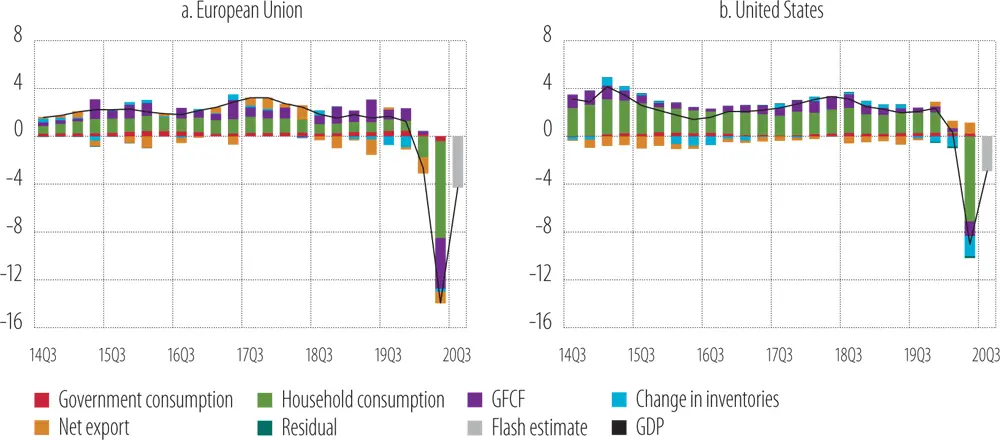
Source: Eurostat, OECD national accounts and EIB staff calculations.
Note: Data for Q3 2020 are preliminary: Eurostat flash estimate for the European Union, and US Department of Commerce advance estimate for the United States. No breakdown of the components of aggregate demand components is provided GFCF stands for gross fixed capital formation.
In the European Union, the impact of the pandemic was already evident in the first quarter of 2020.Although sweeping measures to contain the spread of the coronavirus were introduced in the last two weeks of the first quarter, consumer spending and net exports declined significantly, causing a drop in real GDP in almost all EU members, particularly in Southern and in Western and Northern Europe. Nearly all EU members restricted the non-essential movement of people and closed most shops, along with schools and national borders, mid-March. Gatherings with people outside the household were also restricted. In most countries, the harshest measures lasted throughout April and for much of May. Figure 9plots a stringency index of the measures taken by EU governments.
Figure 9
Stringency of government measures across the European Union
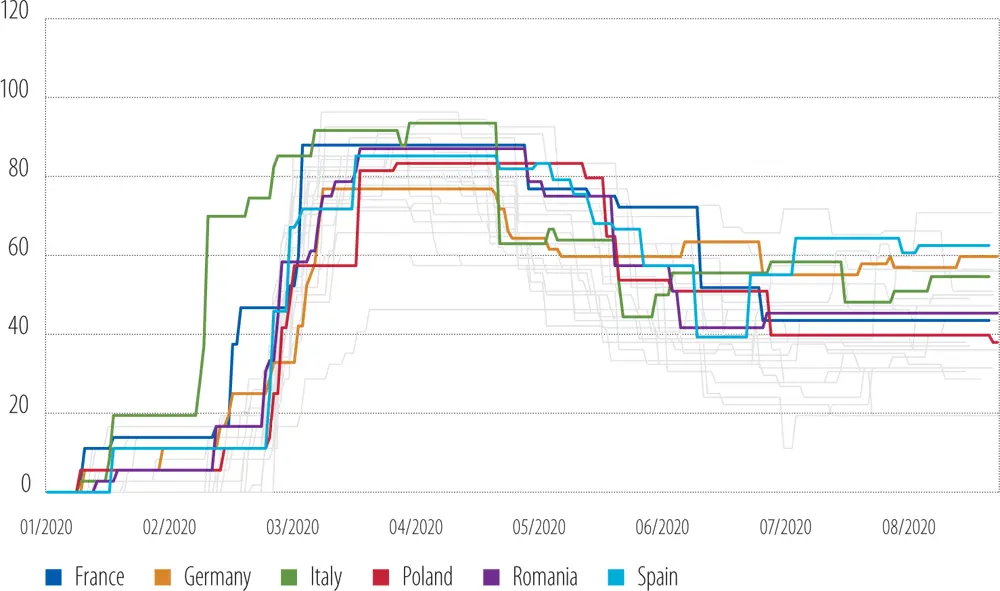
Source: Oxford COVID-19 Government Response Tracker, Blavatnik School of Government.
Real GDP fell precipitously in the second quarter of 2020, as economic activity was stifled by government restrictions across the European Union (Figure 9).The overall decline in real GDP in the European Union was more than 11% relative to the first quarter of 2020 and was the largest decrease in a single quarter on record. The falloff was clearly caused by government measures to contain the spread of the virus, and the decline varied widely across Member States. It was smallest, on average, in Central and Eastern Europe where real GDP in the second quarter fell by 9.7% relative to the first quarter. In Western and Northern Europe, it fell by 11.5%, while in Southern Europe the decline was nearly 15%. By way of comparison, the decline of real GDP in the United States in the second quarter was about 9%, compared to the first quarter.
Читать дальше








